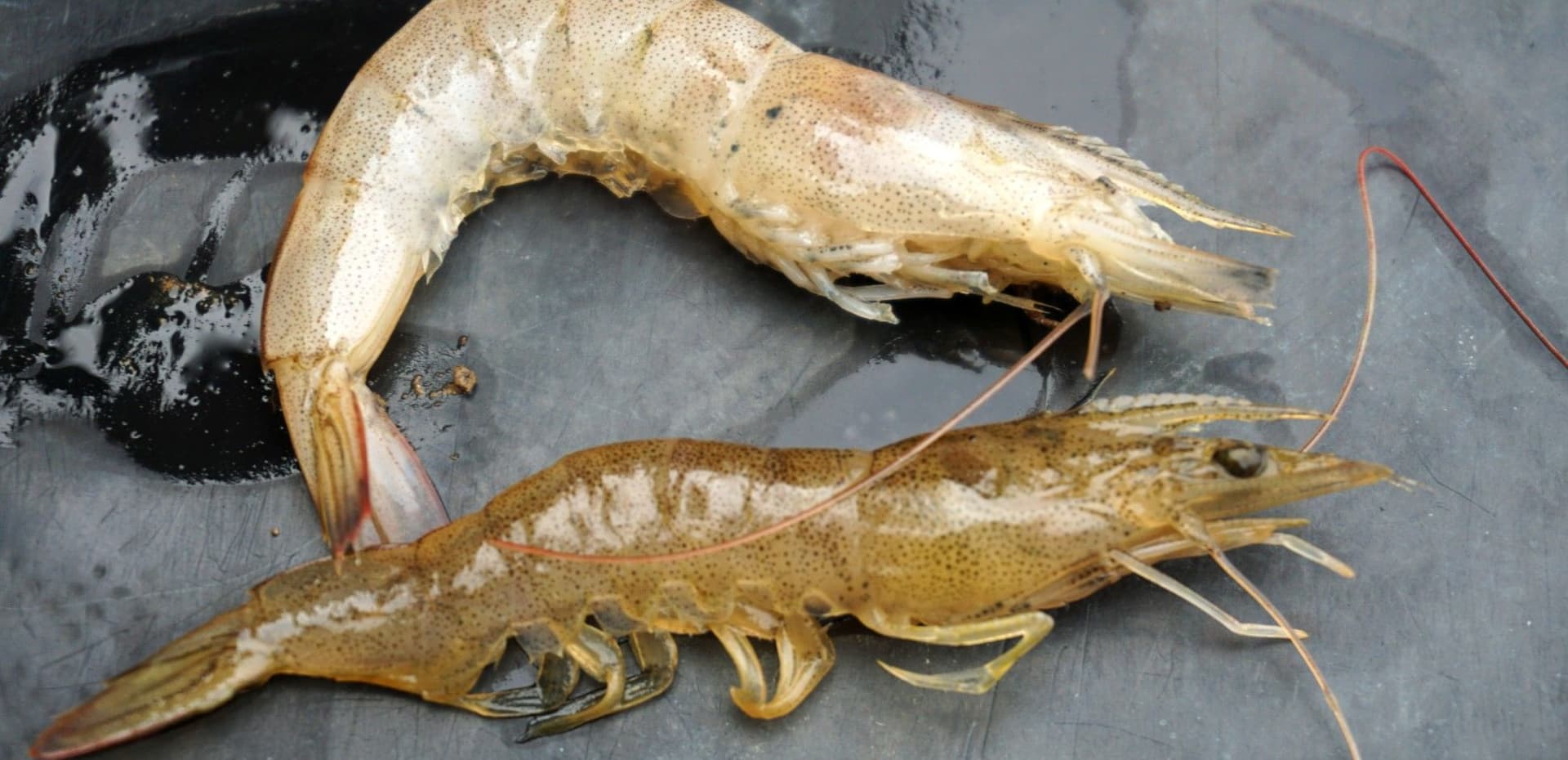
Disease remains a significant obstacle and threat for shrimp farmers. Various shrimp diseases such as white spot, myo, EHP, and AHPND threaten to decrease productivity and even cause cultivation failure.
Some shrimp diseases can be identified through the visual appearance of shrimp. For example, white spots found on shrimp are an indication of WSSV infection, which causes white spot disease. Shrimp infected with myo can be identified through a white or reddish body or tail. In EHP, shrimp experiences growth retardation or increased variety in shrimp size. AHPND-infected shrimp will have necrosis or damage to the hepatopancreas, which usually leads to mass mortality during the early stages of cultivation.
While visual identification methods are simple, the emergence of visual symptoms often means that the disease in shrimp is already at a more severe stage. Thus, early detection is crucial, and can be achieved by regularly checking shrimp samples in a laboratory facility for testing.
PCR: An accurate shrimp disease detection method
PCR or polymerase chain reaction is one of the most accurate shrimp disease diagnosis methods. Most of us probably became more familiar with PCR during the previous Covid-19 pandemic. This pathogen infection diagnosis tool is reliable in terms of accuracy. In aquaculture, PCR is also used for disease infection identification, and is commonly available in laboratories owned by fishery research centers or privately owned laboratories.
PCR relies on the principle of DNA replication which is done millions of times in a short time. It has several types depending on the method and result. Some types of PCR only show a positive or negative result, while others like RT-PCR or qPCR detect the amount of virus in the tested sample, thus helping quantitatively identifying the severity of the infection.
JALA Labs: Your Solution for Early Shrimp Disease Detection
One of the laboratories that you can visit for shrimp disease detection is JALA’s laboratory. JALA Labs is JALA’s solution for shrimp disease diagnosis, and accepts shrimp samples for four of the most common shrimp diseases: white spot, myo, EHP, and AHPND. Here are the benefits JALA Labs offer:
- Uses iiPCR for accurate shrimp disease detection
- Results are available in 24 hours
- Check samples from anywhere
Send your sample to JALA Labs at ShrimpHub by JALA Jl. Daendels RT 03 RW 03, Kel. Keburuhan, Kec. Ngombol, Kab. Purworejo. Learn more about JALA Labs.
When should shrimp be checked in the lab?
Do not wait for visual disease symptoms to show up on your shrimp, as by then it is usually too late. Some considerations for checking your shrimp health in the lab are:
- Observe shrimp behavior. Healthy shrimp are actively motile and respond to movement, have bright physical appearance, full gut, and complete organs. If your shrimp lacks these signs, their health might be compromised.
- Water quality condition, especially bacterial balance. Some diseases are caused by bacteria and should be regularly checked, especially if you find domination of Vibrio bacteria.
- Condition of surrounding farms. If one of your ponds or neighboring farms is infected with disease, watch out, especially if you draw water from the same source.
How to send shrimp samples to the lab?
Shrimp samples, or representatives of shrimp in the pond, are prepared in the form of whole shrimp or specific parts such as appendages or the hepatopancreas. The shrimp samples were then placed in 70% alcohol solution for 24 hours before being sent to the lab.
Every farmer’s worst nightmare is for their shrimp to be infected by diseases. Thus, efforts need to be taken to ensure their shrimp can grow well through proper water quality, feed, and biosecurity management, along with regular checking of shrimp health for early disease infection detection. Shrimp disease detection can be done during the fry stage before stocking. PCR greatly helps early and accurate disease detection which prevents significant cultivation loss. Make sure you check for shrimp diseases as early as possible for better prevention and mitigation.





